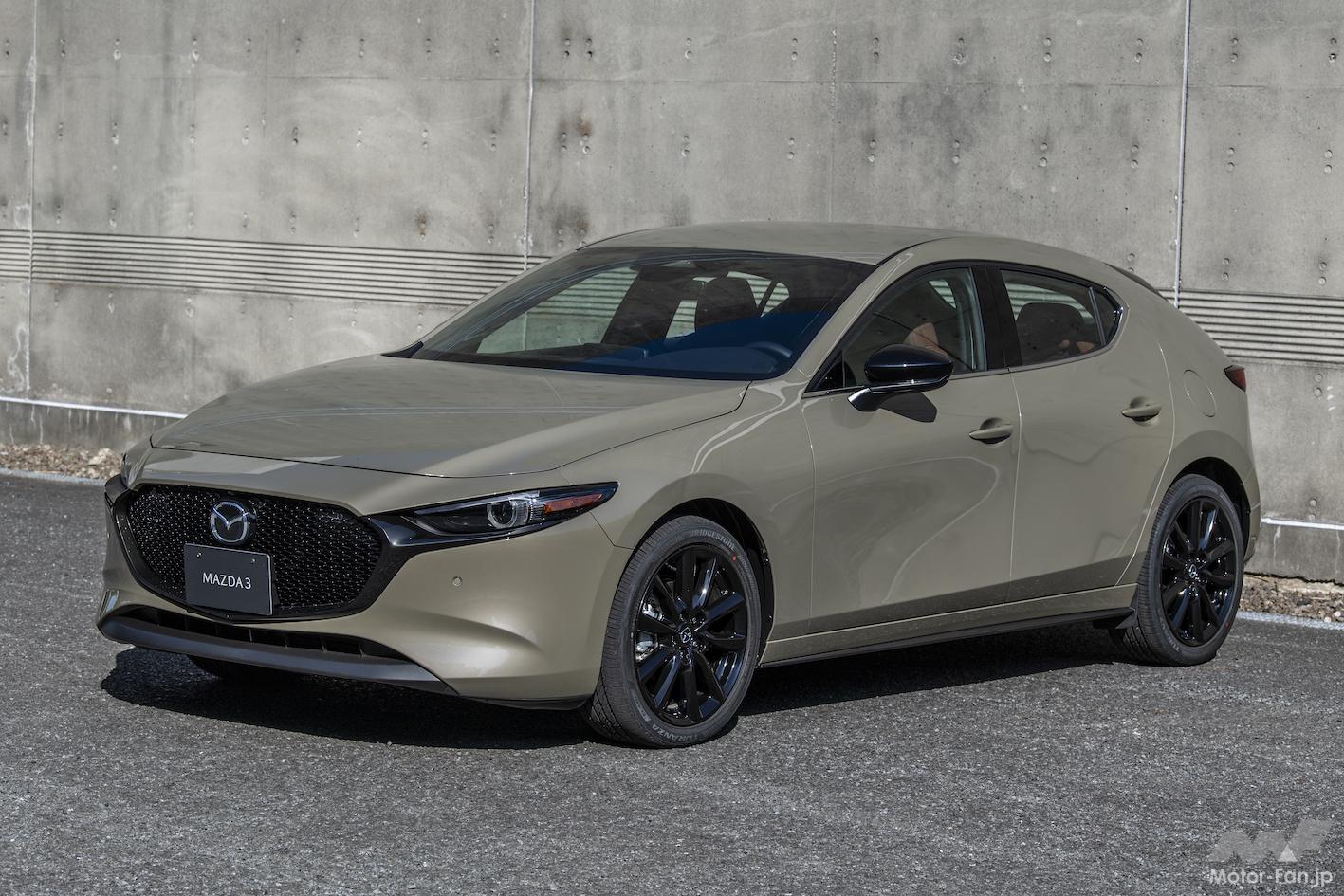In today’s automotive landscape, fuel efficiency and maintenance costs have become critical factors influencing buyers’ decisions. Beyond just fuel consumption, the way a vehicle manages its engine oil plays a crucial role in determining overall reliability, longevity, and ownership expenses.
Oil efficiency in cars is often overlooked, but it’s an essential measure of an engine’s health and design quality. Proper oil management means less frequent top-offs, fewer leaks, reduced engine wear, and ultimately lower repair costs.
Conversely, vehicles that are notorious for burning oil can quickly become a headache for owners, requiring constant monitoring and additional spending. This article explores both ends of the spectrum by spotlighting five cars known for exceptional oil efficiency and five models infamous for their excessive oil consumption.
Engine oil serves several critical purposes in any vehicle. It lubricates moving parts, reduces friction, cools components, and helps prevent corrosion. When an engine burns or leaks oil excessively, it not only risks damage but also depletes a vital resource that keeps the engine running smoothly.
Excessive oil burning is a red flag signaling worn piston rings, failing valve seals, poor engine design, or inadequate maintenance. For owners, this translates into frequent oil checks, higher oil bills, and sometimes costly engine repairs. On the flip side, engines designed to retain oil efficiently reduce the risk of breakdowns and help keep running costs low.
This discussion is especially relevant now, as manufacturers introduce more complex technologies like turbocharging, direct injection, and variable valve timing to meet stringent emissions and fuel economy standards. While these advancements have brought many benefits, they also often introduce challenges related to oil consumption.
Turbocharged engines, for example, operate at higher temperatures and pressures that can increase the likelihood of oil burning. Direct injection, while improving combustion efficiency, can lead to carbon buildup on valves, which impacts ring sealing and oil control. The task for automakers has become balancing cutting-edge tech with durable oil retention systems.
On the other hand, some brands and models stand out for mastering this balance. Many of the vehicles recognized for excellent oil efficiency feature naturally aspirated engines with proven engineering, materials optimized to reduce internal wear, and meticulous thermal management.
These engines typically boast longer oil change intervals and less frequent oil top-offs, which benefits owners who want hassle-free, dependable transportation. Moreover, the use of synthetic oils and improved PCV (positive crankcase ventilation) systems in these vehicles contributes to their superior performance in controlling oil consumption.
Understanding which cars excel in oil efficiency and which struggle is vital for potential buyers, mechanics, and enthusiasts alike. For drivers who use their vehicles for daily commuting or long trips, oil consumption can be an important hidden cost factor.
Knowing which models tend to consume oil excessively helps consumers avoid vehicles that could become money pits or cause unexpected breakdowns. Conversely, opting for cars that hold oil well can contribute significantly to overall satisfaction and cost savings.
In this article, we start by examining five vehicles praised for their oil-efficient engines. These models reflect a range of vehicle types—from compact sedans to luxury SUVs—and showcase different engineering approaches to reduce oil consumption. Following that, we delve into five cars that have earned reputations for burning oil excessively.
These case studies highlight common technical flaws, design challenges, and real-world experiences shared by owners and experts. The goal is to provide a balanced, informative overview that can guide thoughtful vehicle choices and raise awareness about the importance of oil efficiency beyond just miles per gallon.
Whether you’re shopping for a reliable commuter, a family SUV, or a spirited performance sedan, understanding oil consumption patterns can save you time, money, and frustration.
As engine technology continues evolving, paying attention to how your car handles oil is a wise step toward smarter, longer-lasting ownership. Let’s begin by exploring those vehicles that excel in oil efficiency—cars that prove that longevity and reliability go hand in hand with smart engineering.
Also Read: 5 Trucks With the Best LED Bed Lighting and 5 With Dim Lamps
What Makes a Car Oil-Efficient?
Oil efficiency in vehicles is not just a stroke of luck—it is the result of careful engineering, consistent quality control, and the application of advanced technologies. At its core, oil efficiency means that a car’s engine consumes minimal oil beyond regular maintenance intervals.
To achieve this, the engine must be designed to minimize internal friction and maintain strong sealing within its cylinders. Piston rings, for example, play a crucial role in ensuring that oil does not seep into the combustion chamber. In oil-efficient engines, these components are made with high-quality materials and are precision-fitted during manufacturing to prevent leakage or wear.
Another major contributor to oil efficiency is the engine’s thermal management system. Engines that run at excessively high temperatures can thin out or burn oil more rapidly. Automakers who focus on oil efficiency typically include robust cooling systems and use synthetic oils designed to withstand a wider temperature range.
Moreover, some advanced engines include oil catch cans or vapor recovery systems to prevent oil mist from escaping into the intake system—an innovation that’s particularly common in turbocharged engines.
The role of software cannot be underestimated either. Modern vehicles are heavily dependent on engine control units (ECUs) to manage combustion, fuel delivery, and emissions. When this software is properly calibrated, it ensures efficient operation under various conditions, including how and when oil is used.
Poorly programmed ECUs can contribute to oil being burned inefficiently or unnecessarily, particularly in turbocharged or direct-injected engines. As engines become more complex, software quality becomes a critical factor in oil consumption.
Lastly, consumer behavior also impacts oil efficiency. Aggressive driving, infrequent maintenance, and the use of low-quality oil can all exacerbate oil consumption issues. However, when a vehicle is inherently oil-efficient, it tends to be more forgiving of minor lapses in maintenance and driving habits.
This resilience is what truly separates a well-designed car from one that might look good on paper but becomes a headache after 30,000 miles. Recognizing these engineering and operational factors can help buyers make smarter choices, especially when reliability and long-term cost of ownership are high priorities.
5 Cars Known for Oil Efficiency

1. Toyota Corolla (2010–Present)
The Toyota Corolla has long stood as a pillar of automotive dependability, and one of its most impressive—but often underappreciated—qualities is its oil efficiency. For drivers seeking a low-maintenance vehicle that doesn’t require frequent check-ins under the hood, the Corolla is an ideal match.
Its engines, especially the 1.8-liter inline-4 variants found in the 2010s and the newer 2.0-liter Dynamic Force engines introduced in 2019, are finely tuned to minimize internal friction and optimize thermal performance. The design of the pistons and rings in these engines ensures a snug seal, preventing oil from escaping into the combustion chamber where it could be burned off.
What truly makes the Corolla stand out is how rarely owners have to worry about topping off oil between scheduled changes. It’s not uncommon for drivers to go the full 10,000 miles between synthetic oil changes without seeing a drop in oil level. This is a significant achievement when you consider how many modern engines—especially those with direct injection or turbocharging—tend to consume oil over time.
The Corolla bucks this trend through its engineering simplicity and commitment to quality. It doesn’t rely on complex forced induction systems, which often increase the strain on seals and rings. Instead, it emphasizes efficiency and longevity through a naturally aspirated setup.
Furthermore, Toyota’s conservative approach to engine tuning adds to its reputation for reliability. The brand tends to under-stress its engines rather than pushing them for high output.
This means there’s less wear and tear on components like valve seals and piston rings, leading to better oil retention over the life of the engine. Toyota’s use of variable valve timing (VVT-i) in a well-balanced, non-aggressive configuration ensures the engine breathes efficiently without generating excess internal pressure that could lead to oil seepage.
Another important factor is the Corolla’s low overall cost of ownership, which includes fewer oil-related headaches. For budget-conscious drivers, especially students, commuters, or retirees, the Corolla offers predictability and simplicity. Its oil efficiency isn’t flashy or groundbreaking—but it’s quietly dependable, and in the long run, that counts for a lot.
When combined with affordable parts, easy access to service, and a strong resale market, the Corolla becomes not just a smart financial decision, but a long-term companion that asks for very little in return.

2. Honda Accord (2013–Present)
The Honda Accord, particularly those equipped with the 2.4-liter Earth Dreams engine introduced in 2013, has proven itself as an oil-efficient option in the midsize sedan category. Honda redesigned this engine to meet higher efficiency and emissions standards while maintaining the durability that has long been a hallmark of the brand.
Unlike earlier iterations from the mid-2000s—which occasionally struggled with oil burning—the newer Earth Dreams engines significantly improved oil control through tighter piston ring designs and updated friction-reduction technologies.
One key advantage of the Accord is how seamlessly it blends oil efficiency with engaging driving dynamics. This model doesn’t just sip oil; it delivers smooth acceleration and precise throttle response while doing it. The engineering teams at Honda have managed to create an engine that performs well without taxing its internal components excessively.
This is no small feat, especially in an era where fuel economy pressures have led many manufacturers to adopt turbocharged engines that tend to wear out oil seals more quickly. The naturally aspirated engine in the Accord avoids many of those pitfalls, relying instead on intelligent valve timing and advanced metallurgy to preserve oil integrity.
Honda’s attention to detail in thermal management also plays a critical role in maintaining oil efficiency. The Accord’s cooling system ensures that engine temperatures remain consistent across a wide range of driving conditions. This reduces the likelihood of oil breakdown, especially in high-heat situations such as extended highway travel or stop-and-go traffic.
In addition, Honda recommends and utilizes high-quality synthetic oil that retains its viscosity and lubricating properties longer than conventional oils. This means that owners not only benefit from lower oil usage but can also extend intervals between oil changes without risk.
Perhaps most telling is the experience of long-term Accord owners. Many report owning their vehicles well past the 150,000-mile mark with no need for mid-interval oil top-offs. When issues do arise, they tend to be minor and well-documented, allowing mechanics to diagnose and resolve them efficiently.
As a result, the Accord is a favorite among practical drivers who want minimal engine fuss. With its blend of strong engineering, driver-focused design, and time-tested reliability, the Honda Accord is a prime example of how oil efficiency can coexist with everyday performance and comfort.

3. Mazda3 (2014–Present)
The Mazda3 has always been a favorite among compact car enthusiasts for its blend of sporty handling and upscale design, but it also deserves recognition for its remarkable oil efficiency. Powered by Mazda’s Skyactiv-G engines—a family of powerplants known for high compression ratios and lean-burn capabilities—the Mazda3 bucks the trend of oil-burning direct-injected engines.
One of the most impressive feats of the Skyactiv-G design is how Mazda achieved an unusually high 13:1 compression ratio (14:1 in some non-U.S. models) without falling into the trap of oil consumption or premature wear.
What allows the Skyactiv-G engines to remain oil-efficient despite such high compression? A big part of the answer lies in material science and thermal engineering. Mazda uses uniquely coated pistons and ultra-low-friction components, which work in tandem with optimized oil channels to ensure proper lubrication without excessive pressure buildup.
These design elements prevent oil from sneaking past piston rings and entering the combustion chamber, even under high load. Additionally, Mazda’s intelligent engine software maintains tight control over combustion timing, helping to prevent oil degradation due to heat spikes or knock.
The Mazda3’s oil efficiency is further supported by a finely tuned exhaust gas recirculation (EGR) system and an advanced PCV (positive crankcase ventilation) setup that helps reduce the formation of oil vapor inside the crankcase.
These systems reduce oil mist that could otherwise be pulled into the intake and burned during combustion, an issue that plagues many modern engines. With the Mazda3, owners often find that even spirited driving doesn’t dramatically impact oil levels. Whether commuting or taking backroad curves at speed, this car keeps its oil consumption impressively steady.
Adding to its appeal is the Mazda3’s design ethos: efficiency without sacrificing fun. Many drivers praise the vehicle’s road feel, steering precision, and premium interior. Despite being a compact car, it feels refined and engaging. That you can enjoy this level of driver involvement without having to worry about oil top-ups every month is a rare combination in today’s market.
The Mazda3 makes the case that even in a segment crowded with economy-focused options, smart engineering can provide superior performance and long-term reliability—including when it comes to your engine’s oil usage.

4. Lexus RX350 (2015–Present)
The Lexus RX350, a luxury midsize SUV, may not be the first name that comes to mind when discussing oil efficiency, but its 3.5-liter V6 engine is a quiet champion in this regard. Despite its size and power, the RX350 manages to retain oil levels extremely well between service intervals, making it one of the most low-maintenance luxury crossovers on the road today.
Lexus, benefiting from Toyota’s engineering rigor, incorporates conservative tuning and long-lasting internal components to achieve this level of performance and reliability.
The heart of the RX350’s oil efficiency lies in its engine configuration. Toyota’s V6 engines—particularly the 2GR-FKS series used in this model—are known for their solid construction and careful calibration.
These engines feature dual VVT-i with wide-range intake control, which allows the system to adjust valve timing for efficiency without forcing oil through the crankcase in high-pressure scenarios. Unlike some turbocharged rivals that suffer from blow-by and PCV-related oil burning, the RX350’s naturally aspirated V6 keeps combustion and lubrication systems separate and well-balanced.
In addition to mechanical robustness, the RX350 also benefits from advanced engine management software and a state-of-the-art cooling system.
The engine stays at an optimal operating temperature, reducing oil thinning and evaporation. Lexus recommends fully synthetic oil, which can last up to 10,000 miles between changes. Most RX350 owners report not needing to add oil between changes, even with mixed driving. This speaks volumes about the precision engineering and build quality involved in each engine.
Finally, the RX350 fits perfectly into Lexus’s brand philosophy: deliver effortless ownership with minimal surprises. This is crucial for buyers in the luxury segment who expect not just refinement, but also peace of mind.
An oil-hungry engine simply doesn’t belong in a vehicle that promises luxury, reliability, and comfort. The RX350 delivers on all counts, making it a smart buy for anyone who wants a plush driving experience without the annoyance of frequent under-the-hood inspections.

5. Hyundai Elantra (2017–Present)
The Hyundai Elantra, particularly the models built from 2017 onward, showcases just how far Hyundai has come in engine design and oil management. While earlier generations of Hyundai vehicles occasionally suffered from quality inconsistencies, the modern Elantra is a different story.
The 2.0-liter Atkinson-cycle engine used in many Elantra trims is a standout when it comes to both fuel and oil efficiency. These engines are designed to operate under low-load conditions for most of their lives, which means less strain on piston rings, gaskets, and valve seals—the usual suspects in oil loss.
One standout feature of this engine is its thermal efficiency. Hyundai has engineered this powerplant to warm up quickly and stay at ideal temperatures, reducing the risk of oil degradation.
The cooling system, when paired with synthetic oil recommended by the manufacturer, ensures that the oil retains its viscosity and lubricating ability for the full recommended change interval—often 7,500 to 10,000 miles. Unlike many small engines that begin to consume oil noticeably after just a few years of use, the Elantra stays remarkably consistent even at higher mileages.
Another reason the Elantra scores high in oil efficiency is its low internal friction architecture. The engine employs friction-reducing piston skirt coatings, an offset crankshaft, and a specially optimized PCV system. Together, these features prevent oil vapor from circulating into the intake and reduce the possibility of oil leaks or burning under normal driving conditions.
As a result, many Elantra owners report years of consistent oil levels without any need to top off between changes—something that cannot be said for many other economy cars.
Hyundai’s confidence in this engine is backed up by its long powertrain warranties, often stretching to 10 years or 100,000 miles. The company wouldn’t offer such extensive coverage if it didn’t believe in the long-term reliability and oil retention of its engines.
For buyers who want a balance of affordability, modern tech, and very low ongoing maintenance, the Hyundai Elantra is one of the best-kept secrets on the market—and a truly oil-efficient option for daily drivers.
5 Cars That Constantly Burn Oil

1. Jeep Grand Cherokee (2011–2013 with the 5.7L HEMI)
The Jeep Grand Cherokee equipped with the 5.7-liter HEMI V8 engine from the early 2010s is infamous for excessive oil consumption issues. While the HEMI V8 is known for robust power and respectable towing capacity, it unfortunately has a reputation for burning through oil at an alarming rate, sometimes a quart every 500 to 1,000 miles. This level of oil usage demands constant monitoring and frequent top-ups, which can become costly and inconvenient for owners.
One of the main reasons behind this oil consumption is the design and materials used in the engine’s piston rings and valve seals. Over time, the seals tend to harden and crack, allowing oil to leak past and burn in the combustion chamber.
Additionally, the 5.7L HEMI uses a variable valve timing system and a sophisticated cylinder deactivation feature called Multi-Displacement System (MDS). While these technologies improve fuel economy under light loads, they can exacerbate oil control problems if not perfectly maintained or if the engine experiences wear.
Another contributing factor is the thermal management of the engine. The 5.7L HEMI runs hot under heavy load, which can thin out engine oil faster than usual and make the seals less effective. When oil thins, it’s more likely to slip past critical sealing surfaces, leading to increased consumption.
Jeep’s factory-recommended oil change intervals and grades may not always be sufficient to combat this thinning, so some owners resort to more frequent oil changes or synthetic oils with higher viscosity ratings to help reduce consumption.
The oil-burning problem on these Grand Cherokees has led to numerous class-action lawsuits and widespread consumer complaints. While the 5.7L HEMI is still capable of delivering strong performance, its oil consumption issues tarnish its reputation.
Buyers looking for a Grand Cherokee with this engine should be prepared for higher maintenance costs and the need for regular oil checks, or consider opting for models with other engines or later model years where some of these issues were mitigated.

2. BMW 3 Series (2007–2013 E90/E92 with N54/N55 engines)
BMW’s 3 Series models from 2007 to 2013, particularly those equipped with the turbocharged N54 and N55 engines, are notorious for excessive oil consumption problems.
These inline-six powerplants represent BMW’s shift towards direct injection and turbocharging but came with a cost: many owners reported that the engines would burn oil at a rapid rate, sometimes necessitating a quart every 600 to 1,000 miles or even more. This is far above the typical consumption rates expected from luxury performance sedans.
One underlying cause of the oil consumption is the design of the piston rings and cylinder walls. The N54 engine, in particular, had issues with piston ring sealing due to material wear and improper break-in procedures. Furthermore, the direct injection system contributes to carbon buildup on intake valves, which can disrupt the sealing efficiency of the rings.
As these rings wear down, oil can leak into the combustion chamber and burn off. BMW’s variable valve timing (VANOS) system also adds complexity that sometimes results in uneven wear or oil flow issues if not regularly serviced.
Thermal stress plays a role as well. Turbocharged engines run hotter than naturally aspirated engines, and the N54/N55’s forced induction places additional pressure on the engine’s lubrication system. When the engine oil breaks down due to heat, it loses viscosity and protective properties, making it easier for oil to bypass piston rings or leak through seals.
Many owners found that sticking to BMW’s recommended synthetic oil and service intervals helps, but it doesn’t eliminate the problem entirely.
This oil consumption issue affects the resale value and ownership satisfaction of these BMW 3 Series models. While the driving experience remains sporty and engaging, owners need to be vigilant about oil levels and prepared for higher maintenance costs.
Some enthusiasts perform engine rebuilds or piston ring replacements as preventive measures, but this can be expensive. The N54/N55 engines, despite their issues, still have a loyal fan base, but oil consumption remains a notable caveat.

3. Volkswagen Passat (2008–2011 with 2.0T engine)
The Volkswagen Passat equipped with the 2.0-liter turbocharged four-cylinder engine during the late 2000s and early 2010s is well-known for burning oil excessively.
Many owners reported oil consumption as high as one quart every 500 to 1,000 miles, raising concerns about the engine’s longevity and reliability. This problem is particularly frustrating given the Passat’s positioning as a comfortable, family-oriented sedan, where ease of ownership is expected.
The root causes of this oil-burning issue lie primarily in the engine’s piston ring design and valve stem seals. VW’s 2.0T engine uses direct injection and turbocharging, which add complexity and additional heat stress to the engine.
These factors accelerate wear on piston rings and seals, allowing oil to slip into the combustion chamber. Another contributing factor is the PCV system, which, if clogged or malfunctioning, can increase crankcase pressure and force oil past seals.
Thermal management and oil quality also influence oil consumption. The 2.0T engine runs relatively hot due to its turbocharger, which can cause engine oil to break down faster than anticipated.
This results in thinner oil that lubricates less effectively and is more prone to leaking. Many owners find that adhering strictly to synthetic oil use and shortening oil change intervals helps mitigate the problem but does not completely resolve it.
Volkswagen has extended some warranties on these engines to address oil consumption complaints, and there have been technical service bulletins aimed at improving the issue.
However, the problem persists in many used Passats with this engine. Buyers of these models should prepare for regular oil level monitoring and potential repair costs related to piston rings or valve seals. This issue has certainly left a dent in Volkswagen’s reputation for reliability during that era.

4. Subaru Forester (2011–2014 with FB25 engine)
Subaru’s Forester models produced between 2011 and 2014 with the FB25 2.5-liter boxer engine are widely criticized for excessive oil consumption.
Owners often report needing to add a quart of oil every 1,000 to 1,500 miles, which is well above acceptable limits. This consumption can lead to engine damage if oil levels aren’t carefully monitored and maintained, posing a serious inconvenience for drivers.
The main reason for this problem appears to be poor piston ring sealing and valve guide wear. The FB25 engine uses a unique boxer layout which complicates engine design, but Subaru’s piston ring materials and manufacturing processes in this generation have been called into question.
Combined with a high oil consumption PCV system, oil can more easily enter the combustion chambers. Another contributing factor is the relatively high compression ratio paired with direct injection, which can increase combustion chamber temperatures and accelerate oil burning.
Thermal stress and engine management strategies also contribute to the problem. While Subaru’s engines are designed to run cool, some driving conditions—such as frequent short trips or aggressive throttle inputs—can increase oil breakdown and consumption.
Subaru’s factory recommendations for oil change intervals are sometimes too long for these engines, leading to degradation and reduced oil life. Many owners counter this by shortening intervals and using high-quality synthetic oils.
Despite Subaru’s efforts to improve engine design in later models, the FB25 engine’s oil consumption issue remains a major complaint in used vehicle markets.
It has affected resale values and owner satisfaction significantly. Subaru enthusiasts often recommend diligent oil monitoring and pre-purchase inspections to avoid costly surprises. For potential buyers, this engine serves as a cautionary tale of how even well-regarded manufacturers can encounter issues with oil control.

5. Ford F-150 (2011–2014 with 3.5L EcoBoost V6)
The 3.5-liter EcoBoost V6 engine powering many Ford F-150 trucks between 2011 and 2014 has earned a mixed reputation due to persistent oil consumption issues.
Although it delivers impressive power and torque, especially for towing and hauling, it has been plagued by complaints of burning oil at a high rate—sometimes one quart every 800 to 1,200 miles. This excessive oil consumption poses concerns for truck owners who expect durability and low maintenance.
The main culprits behind the EcoBoost’s oil appetite include the turbocharging system’s heat stress and piston ring wear. Turbocharged engines operate under intense pressure and temperature conditions, which can accelerate the breakdown of engine oil and deteriorate seals faster than naturally aspirated engines.
Additionally, Ford’s original piston ring materials and designs in this generation were not fully capable of resisting these stresses over time, leading to oil leaking into combustion chambers.
Ford attempted to address these issues through updated piston rings and revised engine management software in later model years, which helped reduce consumption somewhat.
However, many early model EcoBoost engines still suffer from oil burning, especially if maintenance intervals are extended or non-recommended oils are used. Aggressive driving and heavy towing can exacerbate the problem, so owners must be vigilant about oil level checks.
Despite these issues, the 3.5L EcoBoost remains popular for its performance and fuel economy compared to larger V8 engines. However, prospective buyers and current owners need to factor in the potential for increased oil use and the associated costs.
Regular oil monitoring and choosing synthetic oils with appropriate viscosity ratings can mitigate some concerns, but the engine’s oil consumption remains a well-documented drawback in this otherwise powerful and versatile truck.
Also Read: 5 Trucks With the Best LED Bed Lighting and 5 With Dim Lamps
As we conclude this comprehensive exploration of oil consumption in modern vehicles, it’s clear that oil efficiency remains an underappreciated yet vital factor in automotive ownership. While miles per gallon and fuel economy often dominate conversations about efficiency, how a car manages its engine oil has equally significant implications.
From the five models known for their exemplary oil retention to the five notorious oil burners, this article has illustrated the broad spectrum of engine design success and failure when it comes to oil management.
The cars that excel in oil efficiency typically reflect deliberate engineering choices. Manufacturers who prioritize durability invest heavily in material quality, piston ring design, valve seal technology, and advanced engine control systems. This attention to detail often results in vehicles that not only consume less oil but also offer longer intervals between oil changes and fewer maintenance surprises.
For owners, this translates into tangible benefits such as reduced maintenance costs, improved reliability, and enhanced resale values. Brands like Toyota, Honda, Mazda, Lexus, and Hyundai have repeatedly demonstrated that it is possible to produce engines that balance performance, emissions compliance, and oil retention with remarkable success.
On the opposite end of the spectrum, vehicles known for excessive oil consumption typically share common mechanical and design issues. Problems with piston rings, valve seals, PCV systems, and thermal management can compound over time, leading to engines that demand constant attention.
As seen in models like the Jeep Grand Cherokee with its 5.7L HEMI, certain BMW 3 Series turbocharged engines, Volkswagen’s 2.0T Passat, Subaru’s FB25 boxer engines, and early Ford EcoBoost V6 trucks, the cost and inconvenience of frequent oil top-offs can significantly detract from the ownership experience.
These vehicles serve as cautionary examples of how advanced technology without adequate durability testing or design refinement can lead to consumer dissatisfaction.
For prospective car buyers, understanding oil consumption patterns is more than just trivia—it’s an essential part of due diligence. Knowing that a vehicle is prone to burn oil means anticipating extra costs and more frequent maintenance, factors that may tip the scales when choosing between competing models.
Conversely, selecting cars with proven oil efficiency means less worry about the engine’s health and greater peace of mind. For enthusiasts and mechanics, these insights help guide better diagnostics and repair approaches when oil-related issues arise.
The broader lesson here is that engine oil consumption should not be overlooked in the pursuit of greener, more fuel-efficient vehicles. As regulations push automakers toward smaller, turbocharged, and direct-injected engines, the challenge of maintaining oil efficiency grows.
Yet, the examples of oil-efficient vehicles remind us that with intelligent engineering and quality manufacturing, these challenges can be overcome. For the consumer, staying informed about these issues ensures smarter vehicle choices and better long-term satisfaction.
In the final analysis, oil efficiency is not just a technical specification but a key indicator of an engine’s overall health and design philosophy. Cars that manage oil well protect one of the most crucial lubricants within the engine, prolonging life and minimizing unexpected breakdowns.
On the other hand, engines that burn oil excessively often reflect deeper mechanical compromises or manufacturing flaws, necessitating vigilance from owners.
As technology advances and new powertrain options emerge, keeping an eye on oil consumption will remain an important metric for vehicle quality. Whether you prioritize a hassle-free daily driver, a luxury vehicle with dependable performance, or a rugged SUV, understanding oil efficiency offers a clearer picture of what to expect.
This knowledge empowers buyers to avoid costly pitfalls and embrace vehicles that deliver not only on fuel economy but also on reliable, low-maintenance operation.
In conclusion, oil efficiency deserves a prominent place in any discussion about automotive reliability and ownership costs. By paying attention to this often-overlooked factor, drivers can enjoy smoother, longer-lasting journeys and make smarter, more informed decisions in a complex and rapidly evolving automotive market.
